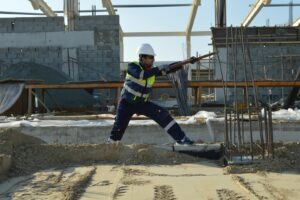
Early research findings suggest the cuts are impacting on the sustainability of community-led housing programmes.
Public sector cuts are threatening the resilience of community-led regeneration, according to Rob Rowlands & Mike Beazley
Cast your mind back ten years. Labour ministers were trumpeting the investment in community-based organisations as the way forward for embedded housing-led regeneration.
Now come back to the present, to an era of deep public sector cuts. Is this community approach as embedded as we thought? What do the cuts really mean for frontline services in community-based organisations? And what do the effects of cuts in these organisations mean for the local communities they serve?
While it is too early to provide a detailed account of this, early evidence from areas that we have been working in suggests that these organisations have not been as embedded as they could or would like to be.
The early evidence of some cuts suggests that community-based regeneration might be a less resilient model than was previously suggested or promised. Ongoing – albeit tapering – support is required, together with a diversification of income sources to make these programmes sustainable.
Imagine then an estate-based regeneration project, a task-and-finish programme focussed around a community-based housing organisation. The regeneration programme received considerable public subsidies over a 15-year period and drew in a significant amount of private resources. A community-based housing association was set up to which the local authority owned housing stock was transferred, its community focus designed to see off opposition to the perceived privatisation of council housing.
Its aim was to be shaped and run ‘as far as possible’ by the residents and today the regeneration defines its success as the provision of innovative neighbourhood management delivered through its strong resident-led capacity. It identifies the retention and reuse of assets within the local area as a significant strength.
But to what degree is an organisation like this embedded within the community it aims to serve?
From the perspective of its governance it might be argued it is very embedded. A majority of the management board members are local residents. In turn this decision-making body is linked into the wider local neighbourhood forums and has influence with other local service providers to ensure where possible the delivery of an efficient and effective management service.
When surveyed, tenants feel increasingly involved in decision-making and there is an active pool of residents who claim they are willing to become involved further. All of this is a positive that this organisation and its approach have fostered. However, involvement in decision-making is only one means of embedding an organisation within its local community.
Early indications suggest that the spending cuts imposed by the coalition government are undermining this security and jeopardising the success of the investment to date.
As the organisation itself identifies, a critical success factor of their approach is the retention of assets within the local community. The housing association has been very good in attracting and securing resources into the area and with its partner organisations has secured asset retention through the employment of a large number of local residents.
With leakage from the estate through some private sector activity already having been criticised by residents, the security of ongoing investment in the estate has been seen to rest with the public sector, with the housing association playing a critical role in this.
However, early indications suggest that the spending cuts imposed by the coalition government are undermining this security and jeopardising the success of the investment to date. With the loss of funding for some programmes through the housing association, staff have been made redundant and the quality and extent of frontline services have been placed at risk. And, importantly, the employees put at risk are disproportionately those who are residents on the estate. Clearly this jeopardises the asset retention possible on the estate and as a community-based organisation the question is why it has come to this?
This article is not a criticism of organisations like this one, whose hard work continues to provide crucial services and ongoing regeneration through difficult times. It is, however, an interesting learning point for others.
Few residents employed by the organisation have been employed in middle or upper management positions. Therefore although they have been a useful link between resident and management, arguably their position has been more vulnerable to these cuts. The organisation is now over ten years old and it would be expected that internal promotions would have provided some resilience to this. Therefore, organisations such as this one risk being merely ‘based’ within local communities rather than having a community basis.
With the public spending cuts likely to deepen it is important for community-based organisations to reassess their resilience to budgetary constraints and the impact that cuts will have in their role as asset recyclers in these local communities.
For organisations to be truly community-based they need to make good on their aims to develop capacity by truly engaging residents in their operation and helping embed resources in those communities during bad times as well as good.
But for central government the critical consideration is how today’s cuts in spending undermine the long term impact of previous expenditure in regeneration projects. Together these factors undermine the continued regeneration and resilience of many areas of regeneration and return to a familiar cycle for the same disadvantaged places.
Regeneration is a long term activity and embedding communities requires a long-term resource strategy if they are to fully realise their potential. Without a big picture recognition of the impact of spending cuts, the Big Society is handicapped even where it has already started.
- Rob Rowlands & Mike Beazley are lecturer and senior lecturer at the Centre for Urban & Regional Studies at the University of Birmingham.
- Download the ezine version of this article.


















Great article! For too long, people have seen citizen-led initiatives as a panacea for top-down programs. But as long as they rely too heavily on the public sector, community-based regeneration will never have the autonomy or resilience it needs to survive downturns.
This is why crowdsourcing–backed by crowdfunding–is catching on so quickly: it provides the ultimate in diversified funding support. A good example is at http://RevitalizNOW.com
There are at least four other factors that are essential to resilient community-based regeneration. They are detailed in this excerpt from my upcoming third book, Rescuing Our Future: http://bit.ly/lK3Btw
Thanks again for an excellent article! – Storm
I think it’s important to draw a distinction between ‘public spending’ and ‘public sector’. Clearly there needs to be some clear water between the public and private sectors when it comes to independent community led activity, but ‘public spending’ is not quite the same as ‘public sector’ and has an essential role to play in the process of regeneration.
I don’t see public spending as ‘subsidy’ as the article kind of suggests, but investing in social outcomes that will generate a social (and possibly a wider economic) return. Let’s not forget that huge amounts of private sector activities are ‘subsidised’ from tax breaks through to tax credits for employees which it could be argued subsidise low wages. There’s no guilt or apology there.
Storm Cunningham makes the point about community regeneration surviving downturns. But this raises the question about what is the purpose of regeneration and in particular its role over the last 30 years? It is important to correct and heal communities in response to the failings of a neo-liberal economic model. The downturn isn’t an aberration but an inevitable failing of that model – albeit a spectacular one.
So rather than ask why regeneration schemes struggle with an economic downturn and/or significant spending cuts, perhaps we should be considering why the economy fundamentally struggles to deliver fairer and more equal outcomes and how can any government be allowed to pull the plug on areas that need regeneration the most?
Now is the time to be considering what form of regeneration we’ll need next to repair communities and local economies from the devastation caused by the downturn and this government’s austerity measures. Let’s also ensure community regeneration organisations are part of a debate as to how we rewire our economy so that it isn’t always the ‘same old areas’ that lose out and ensure that job and wealth creation flourishes most in the areas where the need is greatest.
If national politicians can draw one observation from community regeneration and economic development over the last decade, it is that many areas that are economically poor can be socially rich – and vice versa. Achieving sustainable solutions to achieve healthier and happier communities is the real challenge right now. Community led projects have great deal to contribute in this regard. The challenges facing the sector/movement are not of our making.
The problem for many of these organisations is that they are not owned locally – there is a democratic deficit.
There may be residents on the board, but these are not elected (and often become well meaning oligarchies) and the organisations are not accountable locally. So, when push comes to shove, local people do not feel that these organisations are theirs and will not fight for their survival.
In the end, ownership matters.